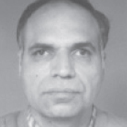The Union Budget for fiscal year 2015-16 introduced very high and unprecedented cuts in high social priority programmes like the Rashtriya Krishi Vikas Yojana (RKVY), ICDS (Integrated Child Development Services), midday meals, Sarva Shiksha Abhiyan (school education), Indira Awas Yojna (rural housing) and women’s welfare.
The cut-back in RKVY from Rs. 8,444 to Rs. 4,500 crore is particularly unfortunate as this scheme has been used as an incentive for state governments to motivate them to increase their own allocation for agricultural development. Hence, this scheme had an impact on agricultural development, higher then what is indicated by the budgetary allocation alone.
The need for according more importance to dryland/ rainfed agriculture has been widely emphasised. The Department of Land Resources is responsible for this to a significant extent. Compared to the Revised Estimate for 2014-15 of Rs. 3,759 crore, this department’s allocation has been cut to `1,637 crore, which is very unfortunate.
The ICDS budget has been cut from Rs. 16,000 crore to Rs. 8,000 crore, the mid-day meal budget from Rs. 13,000 crore to Rs. 9,000 crore, while the Sarva Shiksha Abhiyan budget has been reduced from Rs. 28,000 crore to Rs. 22,000 crore. There are reductions also in drinking water, health and family welfare schemes.The Union Budget (2015-16) has allocated Rs. 30,851 crore for SCSP and Rs. 19,980 crore for TSP. This falls much short of the officially accepted requirement of allocations in proportion to population share.
As the National Campaign on Dalit Human Rights (NCDHR) and Dalit Arthik Aadhar Andolan (DAAA) says, “However, as per the SCSP/TSP Guidelines, the SCs should be allocated 16.6% of the Plan Outlay, which amounts to Rs. 77,236 crore towards SCSP and the STs should be allocated 8.6% of the Plan Outlay, which amounts to Rs. 40,014 crore towards TSP. Dalits, therefore, have been denied a total of 61% of the due amount under the SCSP, and 53% has been denied to Adivasis under TSP.”
Further, the allocation for schemes meant specifically for SC and ST women is shockingly low. As the NCDHR-DAAR review says, “Out of the total allocation of Rs. 30,850 crore under the SCSP, the allocation for women specific schemes is a meager sum of Rs. 73 crore – which amounts to 0.23% only! Are Dalit and Adivasi women not in the gamut of ‘Sabka Vikas’? The scenario is much the same when one looks at the Budget allocation under TSP – a paltry sum of Rs. 40 crore i.e., 0.20% only! The only small streak of hope is the allocation of Rs. 50 crore for SC Girls’ Hostel.”
These and other cuts were introduced in the assumption that increasing responsibility for these will be taken up by the state governments as they now have a significantly higher share of the Central taxes (raised from 32% to 42%), as per the recommendation of the 14th Finance Commission. However, some crucial questions remain. Will the extra resources accruing to the state governments prove adequate to enable the state governments to make up for the entire cuts in some crucial programmes? Even assuming that they have enough extra resources, will all the state governments have the necessary social commitment to ensure that these resources are used only for social priority programmes? While more definite answers to these crucial questions will be available only after some time, it appears the cuts imposed by the Central Government may not be made up entirely in many state budgets. Hence the net effect is likely to be that the overall budget available for several high social priority programmes will be less than the previous years.
Any cuts in high social priority programmes like nutrition and housing aimed at meeting the basic needs of vulnerable sections will prove very costly in human terms. Even at a later stage, these cuts should be re-considered so that any tragic consequences for weaker sections can be checked in time.

